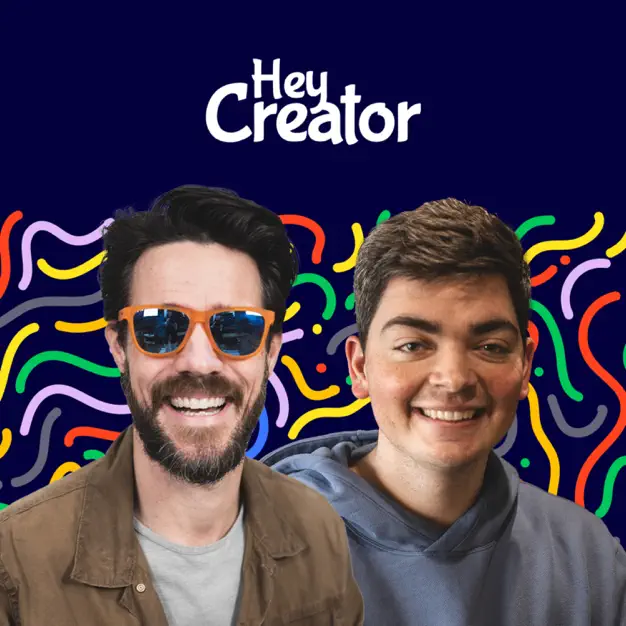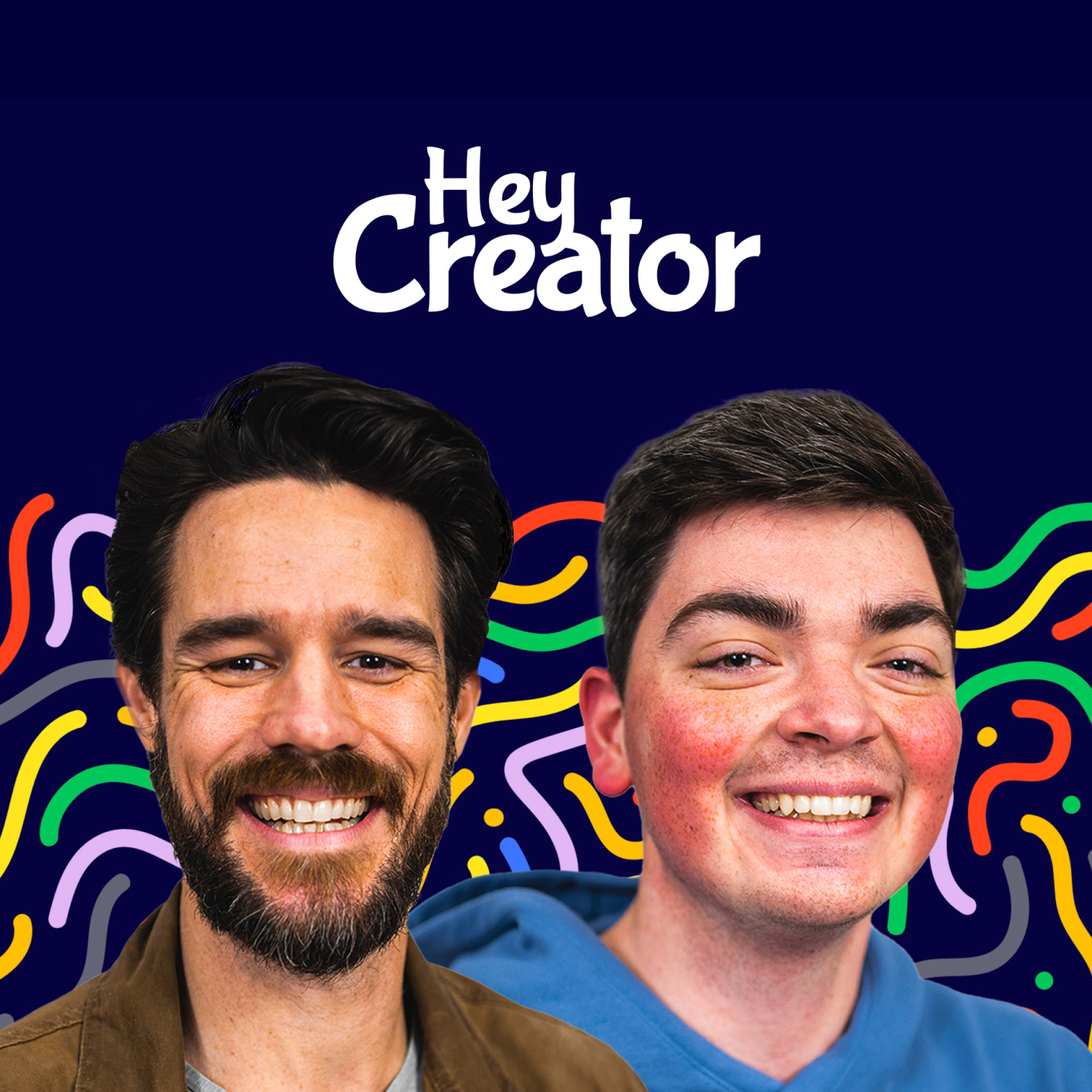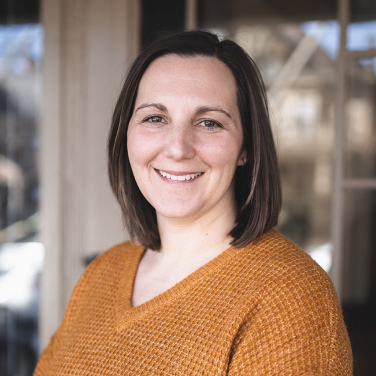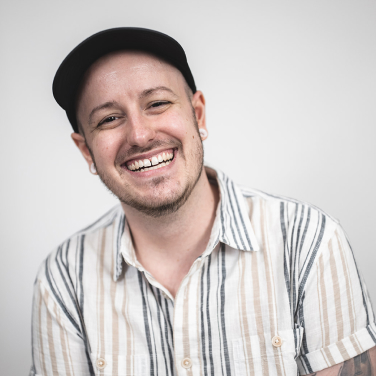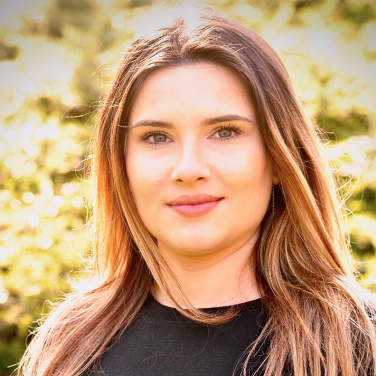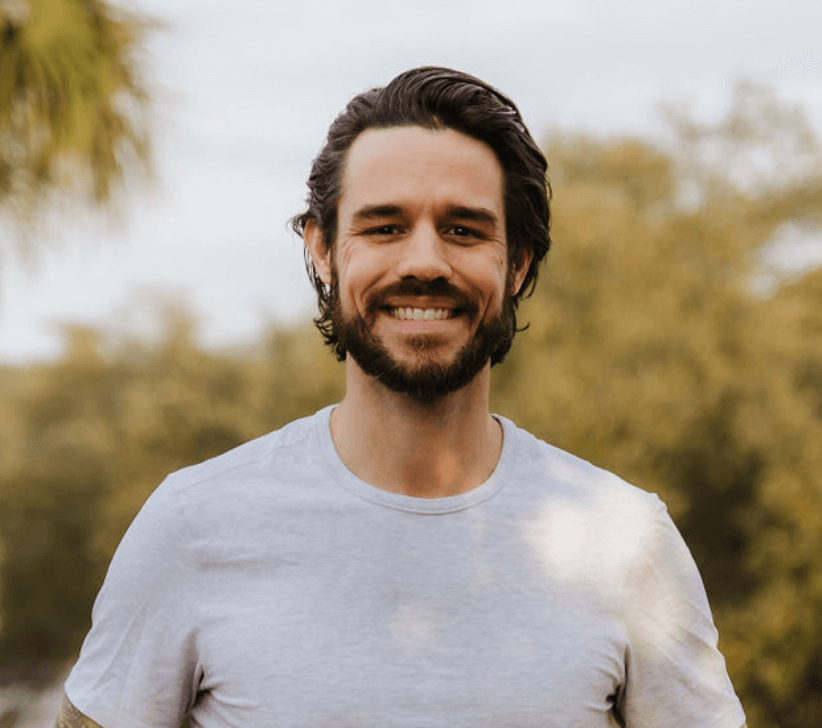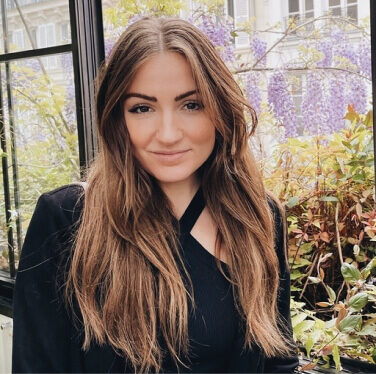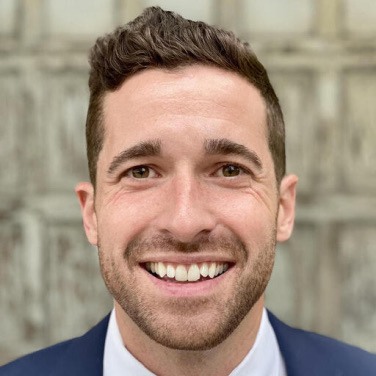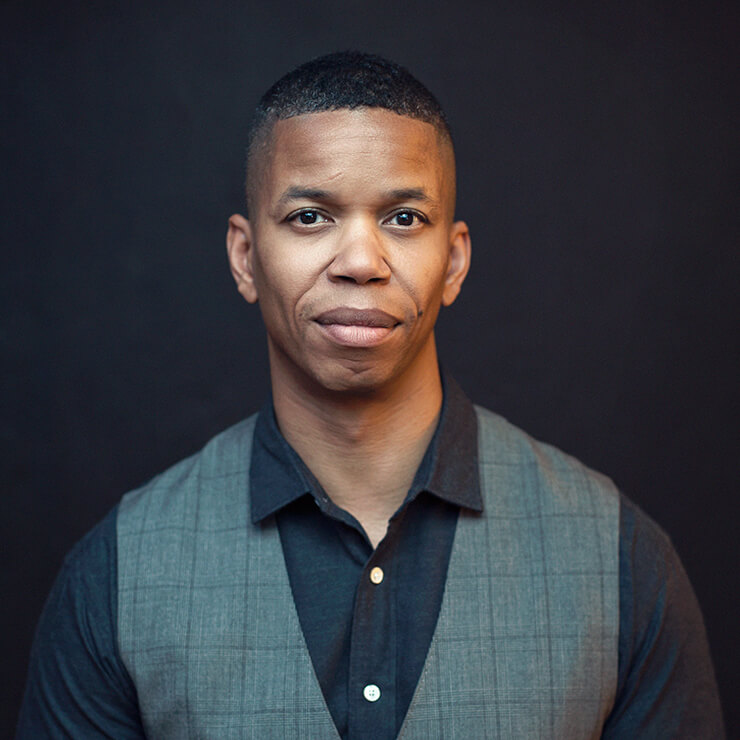[00:00:00] Matt Ragland: If you’re a creator who sells services or high ticket products through one on one conversations, then this is the episode for you. Hey creators, in today’s episode, we’re running an expert session from the community with my good friend, John Meese. And John is an author, personal coach, and he makes more money per subscriber than anyone I know.
We discuss his serve to sell framework, where he urges us to eliminate sales calls and replace them with serve calls instead. And if you don’t know what that means, well, that’s why you should watch the video. Cause John explains everything and it makes a lot of sense to me.
[00:00:32] John Meese: Why don’t we just walk through the different steps and then I’m happy to expound on it. Yeah. So the first is relationship. It’s easy to skip over this or say like, well, duh. But the first step of a surf call is just to establish relationship with a person you’re talking to. And the kind of the, my go to question for this is what’s on your mind.
But the. Goal here is not that question. The goal here is to get, find some common ground where you can bond with a person to their side, and you can immediately change the tone from a shopping call to a friendly conversation. Because what most people do when they show up to a call where, whether it was positioned as a strategy session or discovery call or free coaching call.
Or sales call when someone shows up in their shopping mindset, they’ve already got their guard up and they’re not likely to open up to you. And so it’s really critical that right away, your first job is to be like, Oh wow. Like how old are your kids? Oh, that’s amazing. Like find something in common. I’ve got four kids, which yes, you do Matt too.
So it’s really easy to like use that as a, like talk about kids or things like that. But there was a woman I was talking to and I could tell like based on her body language. The, like, she was still in shopping mode. Like she was like ready, like, let’s get to business. But I was like, well, what’s your background?
Like, where are you from? And we kind of, it took a little, a few minutes for us to figure out, Oh, wait a minute, I just came back from living in Puerto Rico for a year and her youngest child was actually born in Puerto Rico. Cause she lived nearby in Trinidad and Tobago. And so it was like this whole conversation where now it was going to change the whole tone of the rest of the conversation.
So step one is establish the relationship. Step two is to learn what results matter to them, to your target client, the person you’re talking to. My go to question there is what’s your most important goal right now? And I want to just give them. Permission to share. Because if you run into a friend at a coffee shop and they say something like, Hey man, like what’s going on?
Like how’s business? What kind of answer would you typically give?
[00:02:03] Matt Ragland: I would normally say something like business is going well. Uh, or, you know, I might at times say like, Hey, it’s been, it’s been a little slow or we’re trying to make a transition between being a service based company and being more of a media and content education, community based company, and here’s some of the ways that’s been really great to hear some of the ways that it’s been a challenge.
I would talk about it that way.
[00:02:26] John Meese: So that’s a great example where that’s probably the end of the conversation, right? Like you went to a coffee shop, they’re like, how’s business? You’re like, oh, that’s good. But we’re doing this other thing. They’re like, okay, well, that’s cool. Well, good luck with that. The end.
And so typically when someone asks you your most important goal, you’re going to give like a coffee shop kind of conversation. But now what you want to do is you want to take that conversation and sit down across the table from them. This is more metaphorically. You don’t actually have to move. Now the conversation changes where you say like, well, tell me more about that.
And what else? And you’re really just, you’re not. Okay. Telling them what to say, but you’re giving the permission to open up more. Um, because usually what people share at the surface level is not really the full story. So then as they’re sharing, they’re going to naturally get into roadblocks, which is the third step of the surf call, which is where you start collecting data on like, okay, they share with you what the results matter, but what roadblocks are standing in their way.
And at the same time, you typically get into resources. Now I have questions on like how to take these out of people, get these people to share this, but the reality is results, roadblocks, and resources typically are just a three dimensional view of looking at the exact same situation where they all kind of came out.
Simultaneously, or someone will share with you, you’ll say, what are you working on right now? And they’ll say, well, I’m trying to launch an online course and I’ve already recorded a bunch of the videos and I’ve kind of put up a sales page, but I’ve only made one sale so far. Now I’ve only sent a couple of emails to my list, so I’m not really sure exactly what I’m doing wrong.
You know, I do have three different email lists in my business for different things, and one of those lists is 10, 000 subscribers, but I’m really just promoting this course to a hundred people first to make sure it’s going to be a good fit. And in that process, they told you their goal. Well, they said, sell the online course, right?
You might want to ask like, okay, Well, what makes that a success for you want to get more specific? Like, well, I’m trying to replace my wife’s salary as a physical teacher. So if I can just make 5, 000 a month from this course, she can quit her job. You know, that might be more of the real goal, but the roadblock of saying like, I haven’t had many sales at the same time.
They’re telling you I have this huge audience, but I’m not promoting to the full audience. That’s a resource. And that’s a resource that usually only you recognize. So when Telman tells you that they’re like, Friends with a bestselling author or like their dad’s a bodybuilder or like whatever, like whatever, they’ll mention something typically in conversation that, you know, right away, you’re like, wait a minute, that’s obviously how you solve this problem, but it’s because you have this.
outside expertise and perspective.
[00:04:28] Matt Ragland: Yeah. Cause even when you said, I was like, Oh, they obviously, if they start to promote it more to the larger list, they’ll probably make more sales. But the other thing that stood out was we’ve only sent like one or two emails. And when I hear someone say that, I know that probably only really sold it in one email and then maybe mentioned it in their newsletter.
So a lot of people that don’t even know you’re selling this. Of a small segment of your list.
[00:04:51] John Meese: Exactly. So, like, I used that example because I knew, Matt, it would spark in you the reaction that would happen. Whereas, like, you’re like, for you, it’s going to trigger the moment where you’re like, well, obviously.
But the whole point of talking to a Target client is they don’t know all the obviously things that you know. Now, that shows up in a lot of different areas. Like, there’s an example in the book, Surf to Sell, um, of a woman who was, like, trying to build her, like, it was actually also an online client. Course business, but it’s specifically focused on serving real estate brokers.
And she mentioned, she was like, I’ve got this big audience on LinkedIn. I’m posting all the time. It’s not leading to many sales. I don’t know what’s going on. All of my sales would come from referrals, which she’s, she’s listing that as like a roadblock, but that’s actually like a huge resource of like, Oh, you have a referral based business business.
And then she mentioned in passing that her program, her like. Six week program is $249 and it’s for real estate brokers. You look at that and you go, wait a minute. Your goal is to double your business and you’re selling a $249 six week program to real estate brokers. Just double the price. Done. Like you’re, you’re gonna hit your goal.
I would to
[00:05:44] Matt Ragland: like potentially 10 x the price.
[00:05:46] John Meese: Yeah. Potentially 10 x
[00:05:47] Matt Ragland: the price. Yeah. And I’m glad you brought, because like these, this is a really good example, like what kind of things? I was talking with Tiago Forte about this and one of the like breakthroughs that he had with Second Brain. was not just selling it to individuals like you and me getting it.
And Terry Rice talked about this as an episode of HeyCreator, like licensing and targeting and selling like second brain principles to universities, to school systems, to like, if you have a particular expertise that could, Potentially go like to larger organizations, great. Like sell by the seat. I mean, like we’re getting in the weeds, but this, I mean, I know, I know, you know, this, is it a perfect example of like, ah, all these things I know how to help your real estate cohort.
[00:06:28] John Meese: Yes. So the hardest part of there is actually to, for the most part. Because right away, it’s easy to jump into just like the advice monster starts coming out. We’re just like, Oh my gosh, like you just do all these things. Right. And I’m, I’m really bad. I’m really bad at that.
[00:06:43] Matt Ragland: You’re not the only one bad.
[00:06:44] John Meese: Cause we want to, we want to help. Right. And you have the, you have the benefit and the curse of knowledge. And so you can see that, well, obviously that you do a lot of things. So what most people do in this situation is that’s when they start kind of spouting advice and what that does is that it creates this like to do list for the person you’re talking to of all these confusing, frustrating, overwhelming to them ideas and projects.
They haven’t done before you ever get to any sort of sale. And so no matter what you do, if you like to say your goal is to actually sell a program, once you get to the sale, if they already have a to do list a mile long, and you’re saying, we’d like to buy this program, their most likely answer is like, uh, let me get back to you.
I have some other work I have to do first. Well, yeah, because you just gave them a list.
[00:07:20] Matt Ragland: I’m so bad at this. So how do you decide which things are most effective that will still lead to the sale?
[00:07:27] John Meese: Well, I’ll say this, you don’t actually have to share any advice on a surf call. Many of my clients share zero advice.
They just ask questions and they have incredible, it’s incredibly effective. It’s much like a therapist. You go to therapy practice and very rarely does a therapist actually give you like specific advice. They mostly just ask you questions at the end. You’re like, wow, that was awesome. And that’s kind of the goal here is like, you’re just asking questions.
Now I will say some people. Like myself, and I venture to guess you as well, Matt, have a physical need to teach. And so because of that, the resources section is a great place for you to share one insight. And by insight, I don’t mean like homework. I don’t mean, Hey, go rewrite your sales page, but I mean, introduce one belief.
So you mentioned Tiago Forte. So he coauthored a book with Billy, I think Broas is the last name, but civil marketing for smart people, phenomenal book. And he kind of breaks down this idea of belief building. This is definitely something you can do in this call. At this point of the call does at the resources section to say like, well, Hey, did you know, and introduce one thing that they can immediately grasp with no homework.
So for example, going back to the example of like the first, imaginary person we came up with where they have three different lists for some reason under the same niche and they’ve only sent like one or two emails. So, like, hey, did you know that if you send your email to a hundred subscribers, chances are only 20 or 30 of them actually opened it, and only five or 10 actually made it to the bottom of the email, which means we don’t really have enough information yet to see if people are gonna buy it.
[00:08:50] Matt Ragland: It’s a really good example. I got a stumbled on this recently because we were having a conversation with a client and they were a little disappointed in their sales so far because they have a big email list. But then we started to break it down. I was like, well, actually, your conversion rate is pretty much what I would have expected it if we’re talking about.
We had this many people on the wait list and this many people open the email. This many people clicked on the sales page to this many people buying. When we broke down all the percentages, like, Hey, you know, this kind of lines up because then they were like, Oh, they came into the call thinking like this launch is not going well at all.
And then they left it being like, actually, it’s going pretty good. Like. Maybe not amazing, but you know, it’s going pretty good, which is much better than this is a disaster.
[00:09:29] John Meese: Yeah, so that’s great. So at this point, you’ve established a relationship, you’ve collected information from among results, roadblocks, and resources.
So at this point of the call is when you get to the recap. And this question I got from Michael Mugge Stenger. I incorporated this question where he asks, what is your most useful takeaway from today’s call so far? Now I add the so far that’s really critical because it communicates to someone, Oh, the conversation is not over.
There’s more value to come. But by saying, what is your most useful takeaway from today’s call? What that allows you to do is that allows you to get them to just. Reflect, it allows us them to engage the part of their brain that actually is long term memory. So if you don’t ask this question, everything you’ve said before now, even if it was awesome, unfortunately, most people kind of forget it.
But if you ask this question, it causes the long term memory to engage. It causes people’s the part of their brain that like reflects to engage. And they think back and everything you said now, even if you’ve given no advice, if you’ve just asked people questions and you ask them, what is your most useful takeaway from today’s call so far?
Usually I’ll say something like, well, you know, I knew writing a book was important, but I didn’t really understand why it was until we started talking about my dad. That is so important. Thank you so much for helping me get that clarity. Like that was all them. You were just where the midwife essentially to those ideas.
Um, but the, so that question is really key. That’s a recap. And then we get into the recommendation and that’s where the actual sale happens. I refer to this as the triple yes recommendation, because your goal here is to get three yeses. Humans love patterns of three as well too. So the first question here is simply, I believe I can help you.
Would you like me to share how? Quick disclaimer, make sure you actually do believe you can help them. The goal here is not to steal money from people, it’s to serve people. But if everything I’ve shared with you is something you can help with, this is a great place to say, I believe I can help you. Would you like me to share how?
Which is essentially getting permission to pitch. And because you just asked the recap question, What’s your most useful takeaway from today’s call so far? The reciprocity effect is in full strength, which means the person you’re talking to, they feel like they owe you. And when someone feels like they owe you, cause they just named the gift you gave them, they have this visceral need to give back.
And it’s when you say, would you like me to share how they say yes. And sometimes I say, yes, absolutely. Please. Oh my gosh, tell me about your program. And you just, you set the tone. Then you go into the second part of the triple yes recommendation where you say, correct me if I’m wrong, but it sounds like what you really want is result.
I can clearly see that you have resources. And I’d love to help you remove roadblock. Does that sound like a good fit so far? If that’s not obvious as I’m reading it out, that’s a fill in the blank, right? So you have to, at this point, have been listening to show someone, you’re just as active listening. We reflecting back to someone to say, here’s what you told me was the most important result.
Here’s some resources. I see your disposal. That could be really useful. And here’s a roadblock or two that are really painful to you. You still haven’t mentioned your product. You’re just echoing back to someone what they’ve said to you. What I find is that over and over again, people will say, Oh my gosh, yes, that’s exactly the problem.
It’s like you can green my mind. So you’ve got two yeses in a row, and then you say, great, I have a program that is designed to promise, and I’d love to have you join. Is that something you’d like to do? Yes, John. Yes, please. Come on. It’s
[00:12:13] Matt Ragland: like the Futurama meme.
[00:12:14] John Meese: Shut up and take my money. Shut up and take my money.
Yes. Yeah, exactly. So, and that’s the third, yes. Now, just to point out really quick. And that third question, what I didn’t say was like, great, let me start the pitch. There’s no pitch there. It’s just a promise, right? I’m not telling you the price, how long the program is. When does it start? Is it on Tuesdays or Thursdays?
Do we use zoom or circular Riverside? I don’t tell you any of that because that’s something now we start the customer led close, where we’re giving the customer a chance for them to say what matters to them. So if they’re like, yes, but that’s the most common answer you get here. Yes, but how much does it cost?
Then you tell them the price, and you say, Is that something you’d like to do? And they say yes, but when does it start? And then you say, You tell them the start date, You say, Is that something you’d like to do? And then they say yes, and they join. So that’s the surf call structure in a nutshell. Of course, go to much more detail in the book.
Um, go to surf2sellbook.com/heycreator to get your free copy.
But, yeah.



